The best 4K projector 2023: top home theater beamers
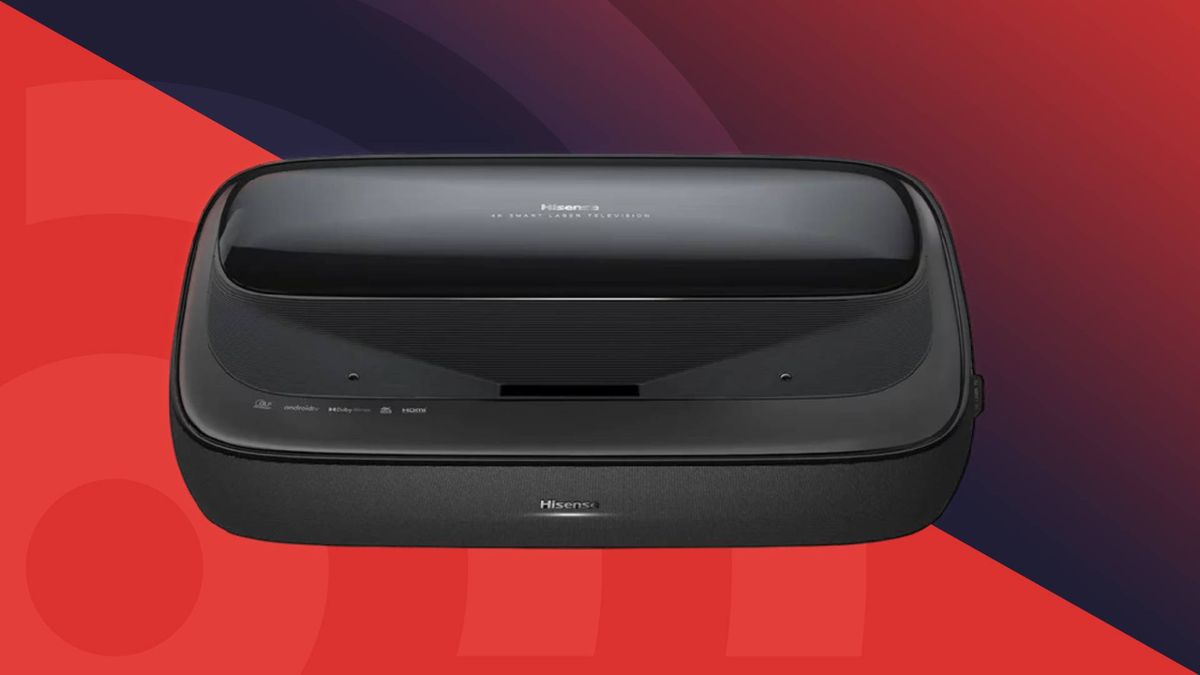
Best 4K projectors: quick menu
The best 4K projectors are still the ultimate way for you to get an immersive theater experience at home. All of the projectors in this guide are capable of beaming a larger image than any regular TVs, with 100 inches being a standard image size when a 4K projector is paired with a projection screen.
Over the years, we’ve reviewed many of the best 4K projectors, from some of the highest-specified models on the market through to the more affordable and high-value ones. Not every viewer has the same needs when buying a 4K projector, so we’ve made our recommendations here based on a range of requirements, from no-compromise home cinema to sports viewing and portable use – and in all cases, tested by us.
An advantage to the best 4K projectors we’ve selected below is that, unlike one of the best 85-inch TVs, they don’t take up much room. If you’re set on a portable option or a projector you’ll only use now and again, also take a look at our best outdoor projectors guide . And if you’re specifically interested in ultra short throw projectors, a category that provides more convenience when it comes to positioning, plus the benefit of built-in speakers and streaming capability, also check out our guide to the best ultra short throw projectors.

Al Griffin
Al is TechRadar’s Senior Editor for Home Entertainment and is based in the US. He has 20-plus years experience reviewing projectors and TVs and was previously the editor of Sound & Vision magazine.
The Quick List
Want to cut to the chase and find out which 4K projectors are the best? Below, you’ll find a roundup of our choices. You can also jump to a more detailed review of every pick and our price comparison tool to help you find the best deals.
The best 4K projector for most people
This laser-based 3LCD model is a great all-around option for movie and TV watching, and it’s also reasonably priced for a projector offering good brightness and excellent contrast.
Read more below
The best budget 4K projector, and it’s ideal for gaming
A low-cost DLP model, BenQ’s projector has better than average brightness and its low input lag plus support for HD input at a 120Hz refresh rate also makes it a great option for gaming.
Read more below
The best premium 4K projector
The only native 4K projector on our list, the DLA-NZ8 is a top choice for home theater perfectionists. JVC’s projector dynamically processes HDR on a frame-by-frame basis, resulting in a true cinema-quality picture.
Read more below
Hisense L9G TriChroma Laser 4K TV
The best ultra short throw 4K projector
An ultra short throw model designed to project big images onto a wall or screen from inches away, the Hisense L9G combines high brightness with rich color and can stream directly via built-in smart TV apps. A 100- or 120-inch screen is included for the price.
Read more below
Samsung The Premiere LSP9T
The best 4K projector for built-in sound
Samsung’s ultra short throw model is capable of projecting images up to 130 inches and streams using the same smart interface found on the company’s TVs. Powerful built-in speakers make it a great all-in-one home theater option.
Read more below
Epson EpiQVision Ultra LS800
The best 4K projector for sports fans
With its 4,000 lumens brightness spec, this Epson ultra short throw is a perfect option for viewing sports in a well-lit room, and it also has a Yamaha-designed built-in speaker system that creates a strong virtual surround sound effect.
Read more below
The best portable projector
While it’s only an HD projector rather than a 4K model, Samsung’s portable projector has a great design and is packed with features such as built-in streaming, 360 degree sound, and voice assistant support.
Read more below
The best 4K projectors in 2023
Why you can trust TechRadar
We spend hours testing every product or service we review, so you can be sure you’re buying the best. Find out more about how we test.
Below you’ll find full write-ups for each of the best 65-inch TVs in our list. We’ve tested each one extensively, so you can be sure that our recommendations can be trusted.
The best 4K projector overall
If you’re looking to find one of the best 4K projectors out there, but don’t want to spend the exorbitant sums that top-tier models from JVC and Sony command, look no further than the Epson Pro Cinema LS12000. This machine uses a laser light engine to shine an almost unbeatable image, making it a perfect choice for watching movies at home on a wall-mounted projection screen.
The LS12000 is a beefy (we’re talking 50 pounds) projector with a 3LCD system inside. It provides powerful color and white light output, strong contrast, and no artifacts we could detect during our testing. Its immaculate picture doesn’t struggle to overcome bright lighting conditions, but when we turn out all the ambient light, it steps up to simply blow us away.
This is a serious home theater projector, and very much worth its mid-range cost. For those looking to spend a bit less, Epson has a nearly identical model, the Epson S11000, which has a lower contrast ratio, with less well-defined blacks, than the LS12000.
Read the full Epson Pro Cinema LS12000 review
The best budget 4k projector
The BenQ TK700STi is an excellent and affordable 4K projector for gaming, but we think it’s also a very good choice for TV and movies too – although it’s quite pricey for a projector of this specification if response times aren’t important to you.
It supports 4K at 60Hz with an unsurpassed 16ms response time at that resolution, which is as low as response times get in a 4K projector. If you want up to 120 inches of bright, crystal-clear game on your wall or screen, this sets a new benchmark.
You can also push to 120Hz if you’re happy settling for HD output. And if you’re planning to use the TK700STi for movies and streaming, you won’t be disappointed: the picture is bright, and color and clarity is admirable, though you’re probably going to want to use a better sound source.
Read the full BenQ TK700STi projector review
The best premium 4K projector
If you’re looking for the best 4K projector possible for a dedicated home theater, and have a budget that lets you reach for the stars, the JVC DLA-NZ8 should be at the top of your list.
The DLA-NZ8 is the latest native 4K projector from the company, and unlike previous lamp-based generations it uses a BLU-Escent laser light source. This results in brighter images, greater consistency and a longer lifespan without compromising the black levels or increasing the fan noise. As a result, this excellent projector builds on JVC’s existing strengths, expanding them in some areas and adding a host of new cutting-edge features in others.
The NZ8 is undoubtedly expensive, but the pricing of JVC’s new line-up is intended to reflect the comparative cost of 4K laser projectors from Sony. Interestingly the NZ8 currently has no direct competitor, so if you want uncompromising performance, peerless HDR tone mapping, comprehensive features and a high degree of future-proofing performance, this remarkable projector is in a class of its own.
Read our full JVC DLA-NZ8 review
The best ultra short throw 4K projector
The Hisense L9G is a revelation for the living room. This projector is packed with top-of-the-line projector features in an ultra short throw design, including a tri-color laser light engine, HDMI 2.1 ports with eARC, HDR support, an Android TV interface and powerful 40W speakers.
Hisense isn’t selling the L9G as a basic projector, but rather as a laser TV with an included ambient-light-rejecting projector screen that’s meant to be permanently installed on your wall. This 100- or 120-inch (varies depending on the model selected) screen will appeal to those who are fussy about image quality, as it will reduce the impact of ambient room lighting on the picture.
As good as its picture performance is, the projector stumbles in a couple of places. Its attempts to adjust brightness on a shot-by-shot basis for some content can mean its overcorrecting in a way that makes the lighting quite jarring. Its motion smoothing can also be trouble as it helps reduce panning judder sometimes but introduces some glaring motion artifacts for everything else on screen. Fortunately, the Hisense L9G has a ton of available settings to adjust these features and many more, effectively letting users dial in the display however they like.
There’s no denying the breathtaking quality of the Hisense L9G, but it’s a projector that takes a commitment to make sense for would-be buyers. It’s definitely less of a commitment than a 100-inch TV, though, as even the affordable models are multiple times the price of the L9G.
Read our full Hisense L9G review
The best 4K projector for sound
After more than a decade since its last home theater projector, Samsung returned with an absolute cracker: the Premiere LSP9T projector. It’s an ultra short-throw beamer that makes use of 4K HDR laser projection, and its three-color laser removes the need for a color filter. That enables the Premiere’s 2,800 lumens brightness to really shine, and it’s capable of producing a very impressive 130-inch image.
Pictures are punchy and colorful, and Samsung’s support for the HDR10+ format adds scene-by-scene picture calibration in compatible films and TV shows. the projector also benefits from full implementation of Samsung’s smart TV operating system, although we found it a bit sluggish at times.
The Premiere LSP9T is expensive, but we think it’s a knockout choice for those who can afford it.
Read our full Samsung The Premiere review
The best 4K projector for sports
There’s no shortage of UST projectors turning up to stake their claim as some of the best projectors on the market right now. Epson has shown solid performance with its laser-lit 3LCD technology in various formats, and the Epson LS800 incorporates it in a powerful UST package.
At $3,499 / £3,199 (about AU$5,240), it’s amazing that this Epson can deliver 4,000 lumens of brightness, which proves more than enough for viewing in the daytime without covering every window with blackout curtains. Epson could have gone further with eARC support and a wider color gamut, but for what it lacks in those departments, it does a solid job making up for it by simply being usable around the clock with little fuss.
The LS800’s built-in Yamaha-designed speaker setup provides a strong complement to its image. It can pack a punch, and is plenty for 200 or 300 square-foot rooms. The virtual sound mode is surprisingly compelling, mixing voices, sound effects, and music with great balance while lending an impression of surround sound.
The LS800 has claimed a place for anyone who wants a simple, powerful projector that lets them beam a huge image they can view at any time of day they want.
Read our full Epson EpiQVision Ultra LS800 review
The best portable projector
With the portable The Freestyle projector, Samsung provides almost everything you need for a night of entertainment, bringing the smart TV experience to any surface it’s aimed at. It offers access to all of your favorite streaming services, a powerful built-in speaker with smart assistant support, and even mobile mirroring functionality – all you need to provide is a power source (either via a nearby wall socket or a compatible power bank) and a Wi-Fi connection (or, failing that, a mobile hotspot).
Approachability is key for mainstream acceptance of any new product, and Samsung has nailed this aspect with The Freestyle. Simply put, any projector which is ready to go within minutes of being taken out of the box is a triumph of design and engineering, and should be celebrated.
Read the full Samsung The Freestyle projector review
How to choose the best 4K projector for you
What to look for in a projector
You’ve made up your mind: a projector is the perfect AV solution for you. So how do you choose one?
Cost is important, of course. But it’s best to start at the other end and ask, what is it that you want the projector to do? Is it something you want to take out in the garden on summer nights, or is it a projector for a comfy home cinema room? Will it live in darkness, or will you want to use it in brightly lit rooms? What do you want to connect it to?
If you’re going down the home cinema route, you’re generally looking at more premium projectors with 4K resolution, HDR, high contrast and high light output from LED or laser. More portable devices tend to cut a few corners in favour of portability and practicality.
The first thing to consider is how far away the projector is going to be. For smaller spaces short throw projectors are great: you can place them fairly close to a screen or a wall and get good results. They’re not ideal for really big projections, however. For that you’ll want a long-throw projector. They sit much further back – so you’ll need to think about where you’ll put yours and how you’ll connect it – but can project much bigger videos.
The next feature is light output, and how that light is created. Brightness is typically measured in lumens, and the bigger the number the brighter the output. Under 3,000 is fine for darker rooms or night viewing but for bright environments you’ll want high output.
There are three kinds of light source. Bulbs, LEDs and lasers. Bulbs are the oldest and cheapest technology, but they can generate a lot of heat and bulbs will need to be replaced fairly often.
LEDs tend to be a little brighter and a lot more accurate, and they don’t generate the same amount of heat so they last much longer – typically 20,000 hours of viewing. LED projectors can be made much smaller than lamp-powered ones.
Lasers are better still, with a similar lifespan to LED but much better brightness. However, they generally cost more too.
Finally, there’s the consideration of whether or not to use a dedicated projection screen. A screen is crucial for getting optimal performance from your projector, whether it’s a regular or portable model. When shopping for a screen, however, you’ll discover there’s an almost bewildering array of options, so check out our five things to consider when shopping for a projector screen guide to learn more about screen types and how to select the perfect one for your setup.
Do I need a 4K projector?
If you’re not convinced by any of the 4K projectors in this list, it may be worth weighing up the pros and cons of competing technologies.
One of the best TVs is generally a simpler affair: you put it in your home, on a wall or stand, and it stays there. It’s a set screen size, and will offer the likes of 4K resolution or HDR at a cheaper price point than a projector.
Projectors tend to be pricier for comparative resolutions or HDR support, especially dynamic HDR – with Samsung The Premiere and the JVC DLA-NZ8 being the only existing beamers with HDR10+.
However, the compact form and flexibility that a projector affords does make it a better choice in a lot of cases, and the ultra-large, cinematic image they can provide makes them well worth the investment for die-hard movie fans.
How important is ultra short throw?
Many new 4K projectors these days come with ultra short throw technology, which vastly reduces the distance needed between the projector and the wall or screen surface it’s projecting onto.
The laser light module used for this creates crisp images, though it does ramp up the price from a non-laser long-throw model, or even regular ‘short throw’ which sits somewhere between the two.
Ultra short throw (or ‘UST’) is certainly a great space-saving measure, keeping your projector in the same position as you might put a TV, and meaning you don’t need to install a projector into your ceiling. With UST, people moving around a room are less likely to block images too. These models also pack better built-in audio than other projector types, along with built-in streaming capability for popular apps.
How big should my 4K projector picture be?
An age-old question. It really comes down to how big a picture you can fit in your home. A standard projection screen size is 100 inches, though larger – in some cases, much larger – and also smaller screens are also available. It’s well worth measuring the wall you have at home, and checking whether the projector you plan to buy can beam an image at the size you have in mind from the distance where you plan to install it.
Are 4K projectors as good as 4K TVs?
Yes, with some important caveats. The biggest one is that projectors are not usually as bright as TVs, and as a result most really struggle in brightly lit rooms: the more light there is, the less vivid your projected images will be. Projectors are best suited to home theater setups rather than sun-drenched living rooms, though some ultra short throw projectors like the Epson EpiQVision Ultra LS800 included in our list provides an exception to that rule.
The second consideration is cost. 4K projectors aren’t coming down in price as quickly as TV panels are, and that means you’ll usually pay more for a good quality 4K projector than for a good quality 4K TV.
That said, if you’re looking for a big picture then the price differences start to disappear. 4K TVs become very expensive at their largest sizes, and projectors effortlessly deliver bigger images than even the biggest mainstream TVs.
Another thing to consider is refresh rate, and again that’s something TVs tend to be better at – so if you’re buying for gaming, you’ll get a smoother performance from one of the best 120Hz TVs with a fast response time than you’ll get from a similarly priced projector. And you’re more likely to find HDMI 2.1 ports with gaming-friendly features in a TV than in a projector.
Will a projector play Netflix, Disney Plus and the rest?
The short answer is yes, but the specifics vary from device to device.
Higher-end long throw projectors are generally “dumb” displays, with no built-in smart TV interface or ability to stream video directly. That’s because they’re usually the main video component in an AV system that uses a receiver and separate speakers for audio, with the receiver sending video directly to the projector, and audio to the speakers.
But some of today’s projectors, particularly UST models, are as capable and connected as any smart TV, with many models running Anroid TV or another TV OS and offering streaming apps from big-name services such as Prime Video or Disney+ pre-installed. All you need to do is log in with your account details and you can use the app just as you would on a TV.
For projectors where that isn’t the case you usually have three options: you can connect a device such as a laptop or Apple TV via the HDMI connector, run the streaming app on that and send its video to the projector; you can put a streaming stick such as an Amazon Fire TV Stick into the HDMI port and use that as your video source; or you can stream wirelessly from a device such as a laptop, Chromebook, phone or tablet. The two main standards for easy streaming are Google’s Chromecast, which is in Android devices and the Chrome browser, and Apple’s AirPlay 2, which is in iPhones, iPads and Macs.
When you stream, you’re usually streaming video and audio simultaneously – which is fine if your projector has speakers that you want to use. If not, your projector or your streaming device may enable you to send audio to wireless Bluetooth speakers or a soundbar at the same time as you watch the video.
How we tested the best 4K projectors
We test the best 4K projectors in real-world conditions, viewing with both room lighting on and lights off to get a sense of how well the projector performs under a range of conditions. All of our viewing is done using a projection screen, either a matt white material or an ambient light-rejecting screen in the case of ultra short throw projectors.
Sources used for our testing include 4K Blu-ray and streaming services, and Xbox One X and PlayStation 5 gaming consoles. We also use test patterns from the Spears & Munsil Ultra HD Benchmark disc and standalone pattern generators to measure performance factors such as peak brightness.
The latest updates to this guide to the best 4K projectors
4 December 2023
Checked to confirm availability of all models in guide.
26 October 2023
Restructured this guide to make it easier to navigate, and to give more specific recommendations to different models. We also added this new ‘Latest updates’ section to help readers know how we’ve changed the guide recently.
link

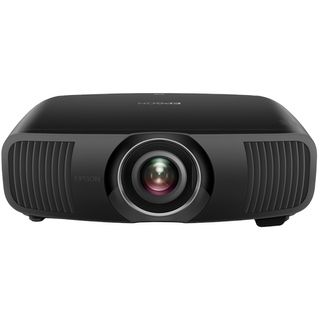
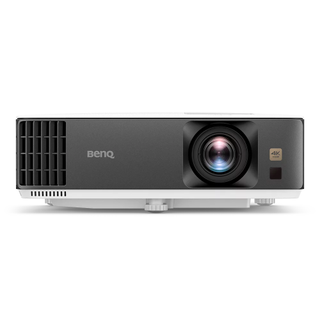
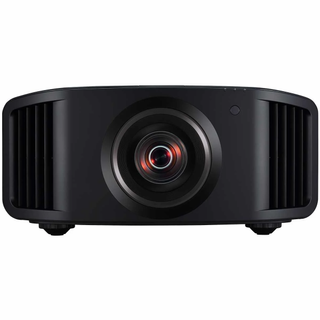
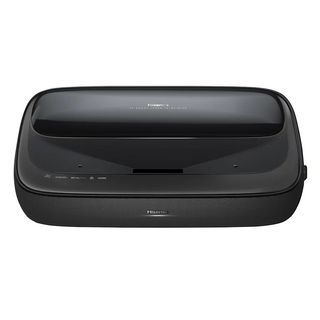
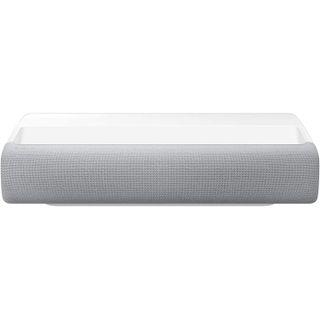
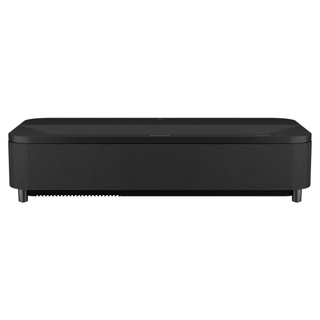
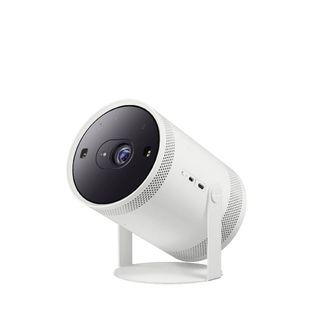
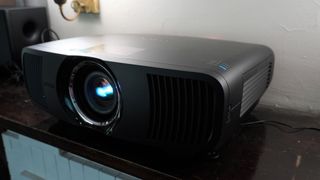
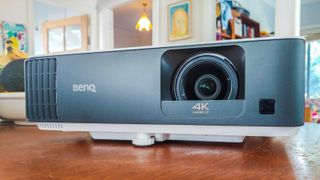
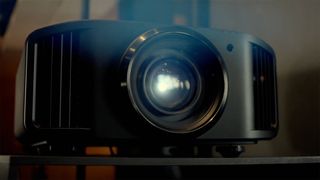

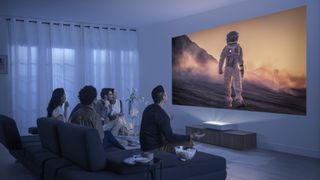
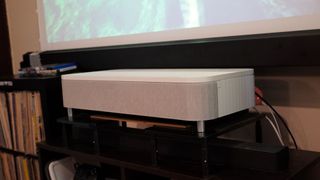
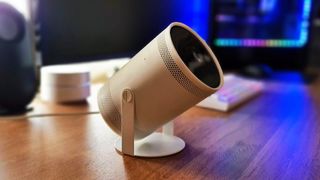




:max_bytes(150000):strip_icc()/2680401-iDEAH-D3-6-2000-746d5ce258d44245b152d00eb5ad54ca.jpg)
